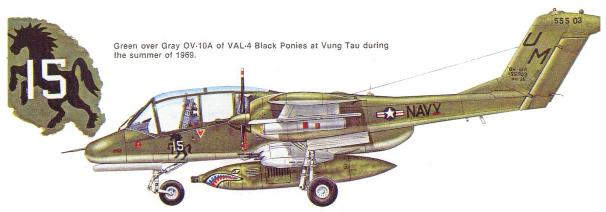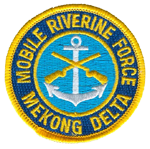
Task Force 116
![]()
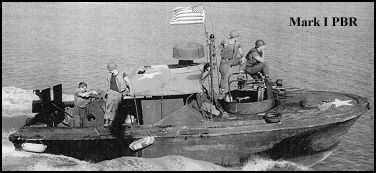
The Great strategic and economic importance of South Vietnam’s extensive inland waterways made it clear from the beginning of the war that the Navy would be in the front rank of the allied forces laced by 3,000 nautical miles of rivers, canals, and smaller streams. The fertile Mekong Delta south of Saigon, where the largest segment of South Vietnam’s population lived, constituted the country’s rice bowl. Northward along the coast to the DMZ, sizable rivers stretched inland past vital population centers such as Hue. Throughout the country the road and rail system was rudimentary while the waterways provided ready access to the most important resources. The side that controlled the rivers and canals controlled the Heart of South Vietnam.
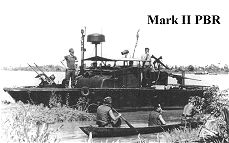 Task Force 116 naval leaders, under the leadership of Captain Burton B. Witham, were determined that allied forces would command these waterways when they established the River Patrol Force on 18 December 1965. From then until late 1966 the Navy procured river patrol boats (PBR) in the United States, prepared the crews at the Coronado and Mare Island, CA training centers, and deployed the units to Southeast Asia for operation Gamewarden. In late 1966, the River Patrol Force was designated River Patrol Squadron 5 for administrative purposes. By 31 August 1968, the force consisted of five river divisions, each controlling two 10-boat sections that operated from combat bases along the major rivers or from ships positioned in the rivers. The Navy reconditioned each of the ships so they could serve as floating base facilities for a PBR section and a helicopter detachment.
Task Force 116 naval leaders, under the leadership of Captain Burton B. Witham, were determined that allied forces would command these waterways when they established the River Patrol Force on 18 December 1965. From then until late 1966 the Navy procured river patrol boats (PBR) in the United States, prepared the crews at the Coronado and Mare Island, CA training centers, and deployed the units to Southeast Asia for operation Gamewarden. In late 1966, the River Patrol Force was designated River Patrol Squadron 5 for administrative purposes. By 31 August 1968, the force consisted of five river divisions, each controlling two 10-boat sections that operated from combat bases along the major rivers or from ships positioned in the rivers. The Navy reconditioned each of the ships so they could serve as floating base facilities for a PBR section and a helicopter detachment.
River Patrol Force Dispositions
River Division 51 Can Tho / Binh Thuy
River Division 52 Sa Dec (later Vinh Long)
River Division 53 My Tho
River Division 54 Nha Be River
River Division 55 Danang
Support Ships 1966
Support Ships 1966
Belle Grove (LSD-2)
Comstock (LSD-19)
Tortuga (LSD-26)
Floyd County (LST-762)
Jennings County (LST- 846)
Support Ships 1967-1968
Garrett County (LST-786)
Harnett County (LST-821)
Hunterdon County (LST-838)
Jennings County (LST- 846)
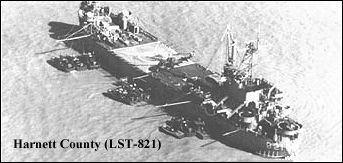
The PBR the ubiquitous workhorse of the River Patrol Force, was manned by a crew of four bluejackets, equipped with a pathfinder surface radar and two radios, and commonly armed with two twin mounted .50 caliber machine guns forward, M-60 machine guns (or a grenade launcher) port and starboard amidships, and a .50 caliber aft. Mark Is, the initial version of the PBR, performed well in the river patrol operations but were plagued with continual fouling of the water-jet engines by weeds and other detritus. When Vietnamese sampans came alongside for inspection they often damaged the fragile fiberglass hull of the PBR. New Mark IIs, first deployed to the delta in Dec 1966, brought improved Jacuzzi jet pumps, which reduced fouling and increased speed from 25 to 29 knots, and more durable aluminum gunwales.
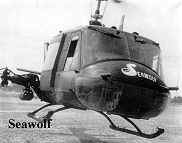 There were a total of (7) PACV’s sent to Vietnam. Task Force 116 employed (3) experimental Patrol Air Cushion Vehicle (PACV). The craft operated in the Mekong Delta during 1966-67 as PACV Division 107. The (3) Navy PACV’s (Chassis Serial #’s 004, 017, 018) were first deployed in 1966, brought back to the U.S., reworked, and redeployed to Viet Nam late in 1967.
There were a total of (7) PACV’s sent to Vietnam. Task Force 116 employed (3) experimental Patrol Air Cushion Vehicle (PACV). The craft operated in the Mekong Delta during 1966-67 as PACV Division 107. The (3) Navy PACV’s (Chassis Serial #’s 004, 017, 018) were first deployed in 1966, brought back to the U.S., reworked, and redeployed to Viet Nam late in 1967.
During 1968 there were 3 separate PACV’s deployed by the Army. They deployed to the Dong Tam area to work with the U.S. 9th Division.
Although able to move with great speed over shallow marshy areas, such as the Plain of Reeds, the PACVs proved to be too noisy and too mechanically sophisticated for riverine warfare in South Vietnam. The (3) Navy PACV’s were finally turned over to the Coast Guard in San Francisco.
Click HERE to read an article about the PACV’s dated 16 October 1968.
A key component of the Game Warden operation was it’s air support element. Initially the Army deployed detachments of two Bell UH-1B Iroquois helicopters and their crews to PBR bases and river-based LSTs. On July 4, 1966 the first Navy HC-1 detachment, HC-1/Det. 29, arrived in-country. Following joint training exercises with Army pilots and crews for a few weeks on the H-1’s, the Navy pilots and crew took over all operational aspects in September 1966. Then on 1 April 1967, the Navy activated Helicopter Attack Light Squadron (HAL) 3 at Vung Tau with responsibility for providing Task Force 116 with aerial fire support, observation , and medical evacuation. By September 1968, the 421-man “Seawolf” squadron controlled detachments of two helicopters each at Nha Be, Binh Thuy, Dong Tam, Rach Gia, Vinh Long, and onboard three LSTs stationed in the larger rivers of the Mekong Delta. The UH-1B “Hueys” armed variously with 2.75 inch rockets; .50 caliber, 60 millimeter, and 7.62-millimeter machine guns; grenades, and small arms, were a powerful and mobile complement to the Game Warden surface units.
The Black Ponies of Light Attack Squadron Four (VAL-4) came into being on January 3, 1969 when the squadron was commissioned at NAS North Island across the bay from San Diego, California. Flying Rockwell OV-10A ‘Bronco’s’ that the Navy borrowed from the Marine Corps, The Black Ponies established two in-country detachments in March of 1969. Flying operations began in April when the Black Ponies began flying combat sorties out of Binh Thuy and Vung Tau. The Black Ponies where mainly responsible for supporting brown water forces throughout the Mekong Delta. Being able to carry more ordnance farther and faster than the UH-1 choppers of the Navy’s helicopter squadron HAL-3 soon made the Black Ponies a favorite among ground troops. In 1970 alone, the Black Ponies flew 7,354 combat sorties for a total of 15,268 hours; they expended 5,450,383 rounds of 7.62mm ammo, 75,616 20mm rounds, 35,824 five inch “Zuni” folding fin air rockets, 68,849 2.75″ rockets and 10,436 flares. They had a confirmed body count of 1,090 with an additional 1,902 probable kills. They destroyed 311 watercraft and damaged 389. Destroyed 1,248 bunkers and damaged 1,700 more. 504 bunkers were destroyed and 187 damaged and they were credited with destroying 36 .51 cal gun sites. Also in 1970 there were 5 squadron personnel wounded in action, one person killed in action and 3 aircraft lost due to enemy fire. From the Legion of Merit and the Distinguished Flying Cross down to Navy Achievement Medals, the Black Ponies accumulated over 1760 decorations for meritorious service and gallantry in 1970. On April 1, 1972 the Black Ponies stood down at Binh Thuy and the squadron was decommissioned and deactivated on April 10, 1972 at Cubi Point in the Phillipines. In its short history, the Black Ponies flew more than 21,000 combat sorties totaling over 42,000 flights – a Navy record for fixed wing aircraft. The Black Ponies has dropped over 11,000 tons of ordnance costing more than $22,500,000.
The River Patrol Force commanders led other naval forces, including the highly trained and skilled SEALs. By mid-1968 the 211-man Seal Team 1, based at Coronado, fielded twelve 14-man platoons, each composed of two squads, generally four or five of the platoons at any given time were deployed to South Vietnam, where one or two of them served with the special operations force in Danang and another three operated out of Nha Be as Detachment GOLF in support of TF-116 Campaign in the Rung Sat Special Zone. Beginning in early 1967, the Atlantic SEAL Team 2 provided another three platoons, two of which were stationed with the Game Warden units at Can Tho. These units launched SEAL Operations in the central delta area. Although focused primarily on the areas south and west of Saigon, the SEALs also mounted operations in the I and 11 Corps Tactical zones.
These elite Naval Commando units carried out day and night ambushes, hit and run raids reconnaissance patrols, salvage dives, and special intelligence operations. Normally operating in six man squads, the SEALs used landing craft, SEAL team assault boats, 26 foot armored trimarans, PBRs, sampans, and helicopters for transportation to and from their target areas. Mobile, versatile, and extremely effective in their dangerous work, the SEALs were a valuable fighting force in the Riverine environment of Vietnam.
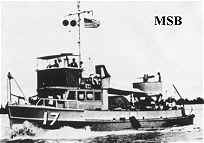 Mine clearing forces also were essential to the security of Vietnams waterways. Nowhere was this more crucial than on the rivers near Saigon, the country’s most vital port. Viet Cong mining of the main channel, the Long Tau River, which wound its way through the Rung Sat Special Zone south of the capital, could have had a devastating effect on the war effort. Consequently on 20 May 1966, the Navy established Mine Squadron 11 Alpha (Mine Division 112 after May 1968) at Nha Be, under command of TF-116 until mid-1968. The minesweeping boats (MSB) were reactivated in the United States and shipped to South Vietnam. The 56 foot wooden-hulled vessels were armed with machine guns and grenade launchers and carried surface radar’s and minesweeping gear for clearing explosives from the key waterways, The Navy also deployed three-boat subordinate units to Danang and Cam Rahn Bay. Detachment Alpha’s strength increased in July 1967 when the first of six mechanized landing craft (LCM(M)) that were specially configured to sweep mines arrived at Nha Be.
Mine clearing forces also were essential to the security of Vietnams waterways. Nowhere was this more crucial than on the rivers near Saigon, the country’s most vital port. Viet Cong mining of the main channel, the Long Tau River, which wound its way through the Rung Sat Special Zone south of the capital, could have had a devastating effect on the war effort. Consequently on 20 May 1966, the Navy established Mine Squadron 11 Alpha (Mine Division 112 after May 1968) at Nha Be, under command of TF-116 until mid-1968. The minesweeping boats (MSB) were reactivated in the United States and shipped to South Vietnam. The 56 foot wooden-hulled vessels were armed with machine guns and grenade launchers and carried surface radar’s and minesweeping gear for clearing explosives from the key waterways, The Navy also deployed three-boat subordinate units to Danang and Cam Rahn Bay. Detachment Alpha’s strength increased in July 1967 when the first of six mechanized landing craft (LCM(M)) that were specially configured to sweep mines arrived at Nha Be.
Game Warden operations got underway in early 1966. Naval leaders set out to secure the vital water passages through out the Rung Sat and to establish patrols on the large Mekong Delta rivers. On these latter waterways, the Viet Cong transported arms and supplies brought in from Cambodia, shifted guerrilla units, and taxed the population. The navy created two separate task groups to direct operations in the respective areas.
On 26 March 1966 U.S. Navy, U.S. Marines and South Vietnamese forces kicked off operation Jack-Stay, the war’s first major action in the Rung Sat. PBR units (including one cection from Tortuga), minesweeping boats from Nha Be, SEALs, and helicopters operated together to sweep the area. At the end of the 12 day effort, the allies had killed or captured 69 of the enemy, destroyed Viet Cong supply bases, training sites; and other logistical facilities; and at least for a time, restricted enemy movement in the zone.
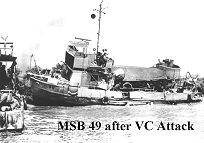
The enemy, however remained a potent threat. In one month, August 1966, Viet Cong mines in the Long Tau heavily damaged SS Baton Rouge Victory, a Vietnamese Navy motor launch minesweeper, and MSB-54. In November, a Viet Cong mine sank MSB-54 and on the last day of the Year American forces discovered a Soviet made contact mine in the shipping channel. The American and South Vietnamese intensified minesweeping operations and the enemy continued to fight back. In February 1967 Communist recoilless rifle fire and mines destroyed MSB-45 and heavily damaged MSB-49.
By the spring of 1967 the Rapid build up of allied forces in the Rung Sat area, the refinement of tactics, and improvement of weapon systems began to reduce enemy effectiveness. During the year the Vietnamese Regional Force and the U.S. Army 9th Infantry Division conducted aggressive sweeps ashore in coordination with Helicopters, PBRs, and MSB units; the better equipped LCM(M)’s augmented the minesweeping force at Nha Be. SEAL’s began sowing mines throughout enemy-held areas, and both PBR’s and MSB’s added rapid fire, 40-millimeter grenade launchers to their armament from mid-1967 to mid 1968. The Viet Cong continued to ambush shipping on the Long Tau with mines, 122 millimeter rockets, rocket propelled grenades, recoilless rifles, machine guns, and small arms. Quick response by allied reaction forces, however, often cut short these assaults. Ship damage and personnel casualties were relatively light. Other attacks never occurred because of PBR and SEAL patrols upsetting enemy plans, and the MSB’s and LCM(M)’s sweeping of mines. Consequently, the communists were unable to sever the vital lifeline to Saigon, even when their forces were fighting for survival during TET and post-Tet battles of 1968.
Game Warden operations in the central reaches of the Mekong Delta began on 8 May 1966, when PBR section 511 of River Division 51 at Can Tho patrolled a stretch of the Bassac River. Soon afterwards other units initiated surveillance of the upper Mekong and the My Tho, Ham Luong, and Co Chien arms of the mighty river that emptied into the South China Sea.
In the two boat random patrols TF-116 sailors checked the cargo and identity papers of junks and sampans plying the waterways, set up night ambushes at suspected enemy crossing points, supported the SEAL’s with gunfire and transportation, and enforced curfew restrictions in their sector, usually no more then 35 nautical miles from the base.
Game Warden operations in the central delta registered only modest success from 1966-1968. These events foreshadowed a busy and dangerous year for Game Warden sailors who boarded over 40,000 vessels and inspected them for enemy personnel and contraband. In the process, the River Patrol Force destroyed, damaged, or captured 2,000 Viet Cong craft and killed, wounded, or captured over 1,400 of the enemy. The U.S. Navy suffered the loss of 39 officers and men killed, 366 wounded, and 9 missing in Battle.
The Tet offensive of 1968 fully engaged Task Force 116. Because of the firepower and mobility the PBR’s stiffened the defense of the numerous delta cities and towns that were under siege by the enemy. The River patrol boat units were key elements in the successful allied stands at My Tho, Ben Tre, Chau Doc, Tra Vinh, and Can Tho. The enemy prevailed only at Vinh Long, where the Viet Cong overran the PBR base forcing the defenders to withdraw to the Garrett County (LST-786), despite this and a few other temporary setbacks, TF-116 reestablished firm control of the major delta rivers by mid-year and helped cut short the Viet Cong attack on Saigon.
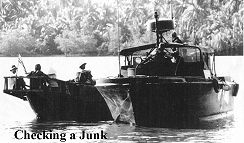 River Sailors also gave critical support to allied forces fighting to contain the enemy surge in I Corps. From September to October 1967, River Section 521 and Hunterdon County deployed to the river area south of Danang and to Cau Hai Bay near Hue. PBR units operated permanently in the northern reaches of South Vietnam after 24 February 1968, when COMNAVFORV established Task Force Clearwater, under the operational control of Commanding General III Marine Amphibious Force. The Mission of the task force was to secure the Perfume River which gave access to Hue from the sea and then Cua Viet. The Task Force eased supply efforts to American forces arrayed along the DMZ and holding the besieged outpost at Khe Sanh.
River Sailors also gave critical support to allied forces fighting to contain the enemy surge in I Corps. From September to October 1967, River Section 521 and Hunterdon County deployed to the river area south of Danang and to Cau Hai Bay near Hue. PBR units operated permanently in the northern reaches of South Vietnam after 24 February 1968, when COMNAVFORV established Task Force Clearwater, under the operational control of Commanding General III Marine Amphibious Force. The Mission of the task force was to secure the Perfume River which gave access to Hue from the sea and then Cua Viet. The Task Force eased supply efforts to American forces arrayed along the DMZ and holding the besieged outpost at Khe Sanh.
Home for Task Force 116 Headquarters was PBR Mobile Base II (Mobase II), a floating barge complex. The base was constructed at Mare Island Naval Shipyard in Vallejo, California and then shipped to Vietnam on the deck of an LSD. The crew berthing quarters, helicopter pad, repair facilities, crane, etc. were then re-assembled at Nha Be. Later the barges were moved up river to a location near Tan Chau. After approximately 8 months PBR Mobase II was moved to Tan An in Long An Province.
PBR photos courtesy of Ralph Fries

